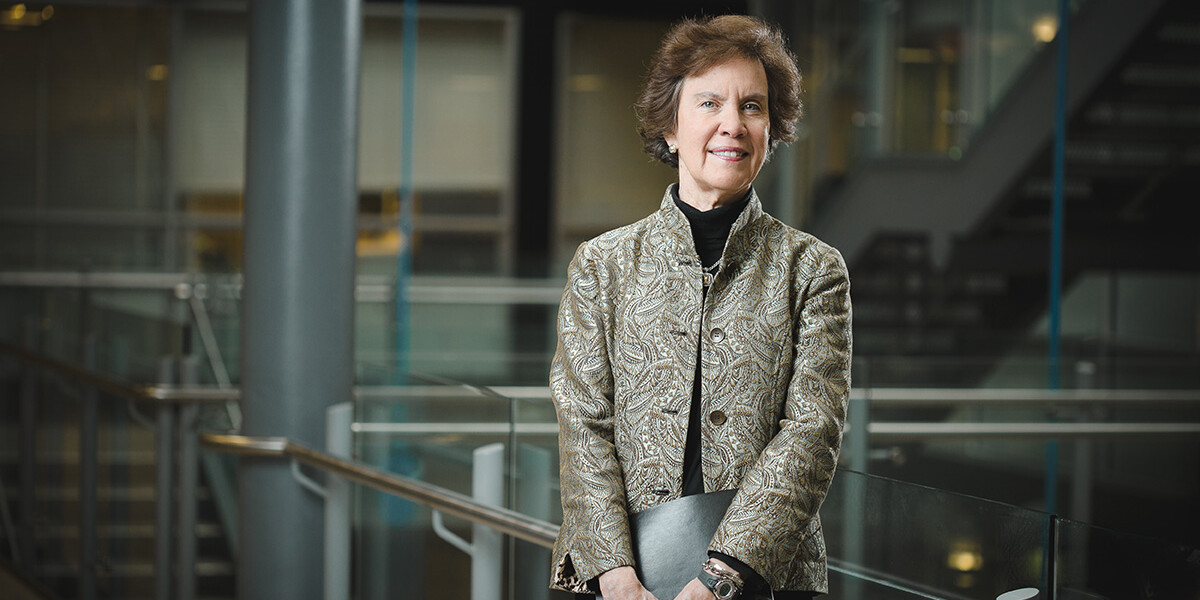Active listening may be the key to mindful communication, but it’s a skill more challenging to master than it sounds.
“Active listening is not an easy nor a natural way of listening for many,” says Susan Whitman, a physician assistant, certified health and wellness coach, and curriculum consultant who teaches in UVM’s Integrative Health and Wellness Coaching Certificate program.
She explains that active listening involves:
- Stepping into someone else’s story.
- Taking out your judgments and opinions.
- Listening to what is said.
“A great active listener hears the words being said and the underlying story behind the words.”
Susan Whitman, UVM Health and Wellness Coaching Instructor
“The listener can tune into the facial expressions, body language, and the meaning behind the words to hear the fullness of what the speaker is saying. One of the first things we teach our students in health coaching is active listening,” says Whitman.
Good Housekeeping recently interviewed Whitman about active listening.
“Most of the time, we are listening to a speaker with one side of our brain, while the other side is constantly formulating a response,” she told the magazine. “Do we agree? What are we going to say next? How can I get my point across?”

How to Tell When It’s Not Active Listening: Distracted, Self-Focused, Other-Focused
In her UVM coaching course, Whitman leads exercises to show the difference between distracted, self-focused, and other-focused listening.
The distracted listening exercise is for students to pair up as one student starts a conversation regarding what they feel passionate about or enjoy. The other student plays the part of a distracted listener by constantly checking their phone, looking around, or not paying attention.
“In this situation, the speaker often feels unheard and disconnected and usually quits talking pretty quickly,” Whitman explains.
The self-focused listening exercise is when the listener relates everything the speaker is saying to themselves: While the listener might feel they are connecting to the speaker by sharing a similar experience, the conversation often gets hijacked by the listener.
“The speaker still doesn’t get a chance to tell their story or feel completely heard,” Whitman says.
The other-focused listening exercise is when the listener is deeply curious about what the speaker is talking about, asks open-ended questions, and shows that they want to learn more.
“They reflect what they hear the speaker say, and they don’t insert their thoughts or judgments into the conversation,” Whitman says. “In response, the person talking feels heard, validated, and respected.”
Whitman says active listening means we turn down the analytical and judgmental side of our brain and focus on listening and understanding what is being said.
“It’s listening with our whole brain,” she says.

The Benefit of Listening to Different Opinions
Another training Whitman describes is pairing people with opposite opinions about highly controversial topics like gun control or politics.
It goes like this: the speaker explains their thoughts and reasoning, and the listener is only allowed to reflect upon what the person said without opinion or judgments. The speaker is given a chance to correct or expand upon the given reflections until they feel like the listener fully understands their side of the story. Roles are then reversed, and the exercise is repeated.
The result? By listening, people changed their attitudes and better understood the opposing position.
“By fully listening and understanding the other person’s point of view, our opinion changes as well,” she says.




